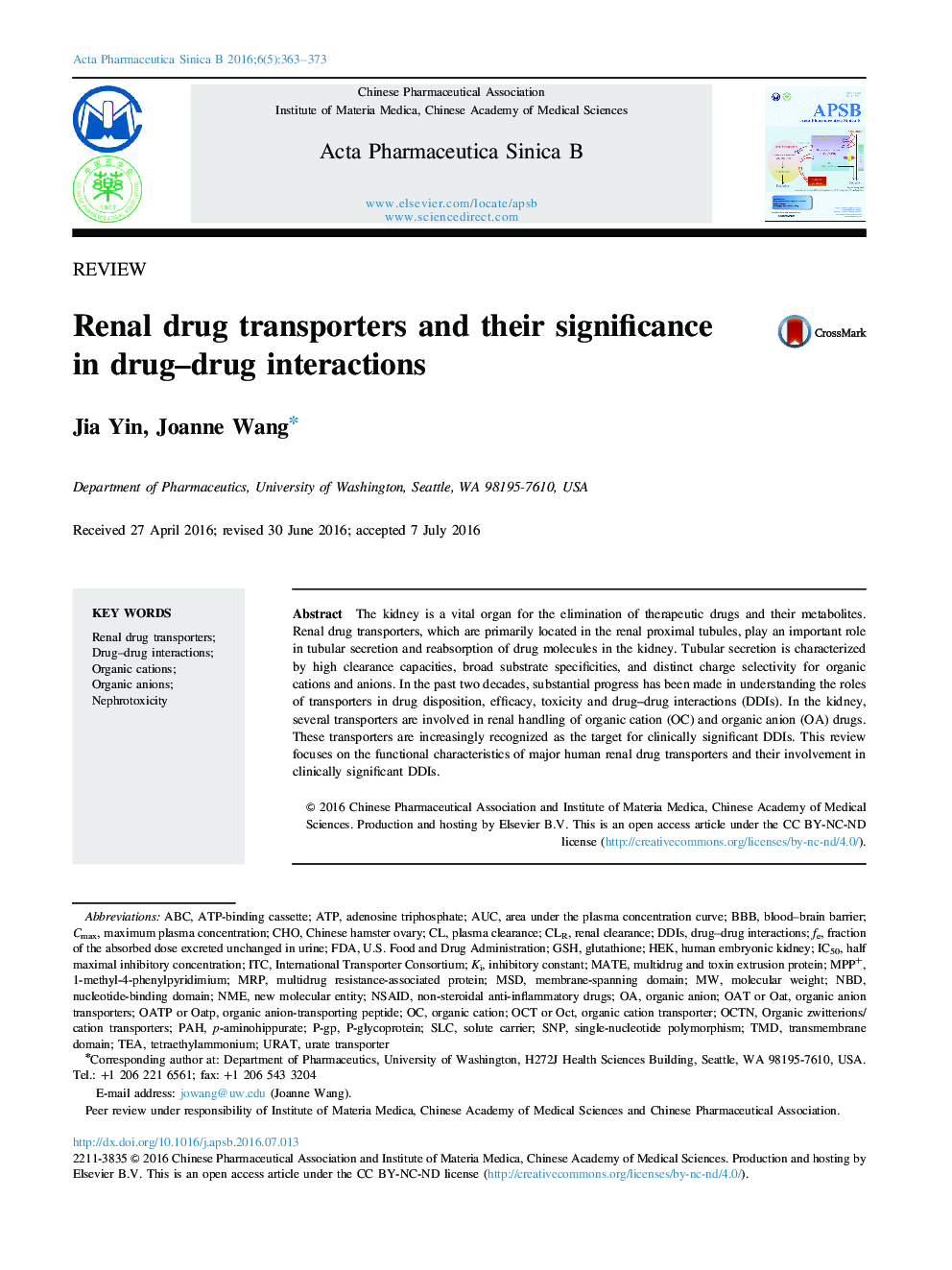| Article ID | Journal | Published Year | Pages | File Type |
|---|---|---|---|---|
| 5546542 | Acta Pharmaceutica Sinica B | 2016 | 11 Pages |
The kidney is a vital organ for the elimination of therapeutic drugs and their metabolites. Renal drug transporters, which are primarily located in the renal proximal tubules, play an important role in tubular secretion and reabsorption of drug molecules in the kidney. Tubular secretion is characterized by high clearance capacities, broad substrate specificities, and distinct charge selectivity for organic cations and anions. In the past two decades, substantial progress has been made in understanding the roles of transporters in drug disposition, efficacy, toxicity and drug-drug interactions (DDIs). In the kidney, several transporters are involved in renal handling of organic cation (OC) and organic anion (OA) drugs. These transporters are increasingly recognized as the target for clinically significant DDIs. This review focuses on the functional characteristics of major human renal drug transporters and their involvement in clinically significant DDIs.
Graphical abstractRenal drug transporters, expressed in the basolateral and apical membrane of renal proximal tubules, play an important role in tubular secretion and reabsorption of drug molecules in the kidney. These transporters are increasingly recognized as the target for clinically significant drug-drug interactions.
